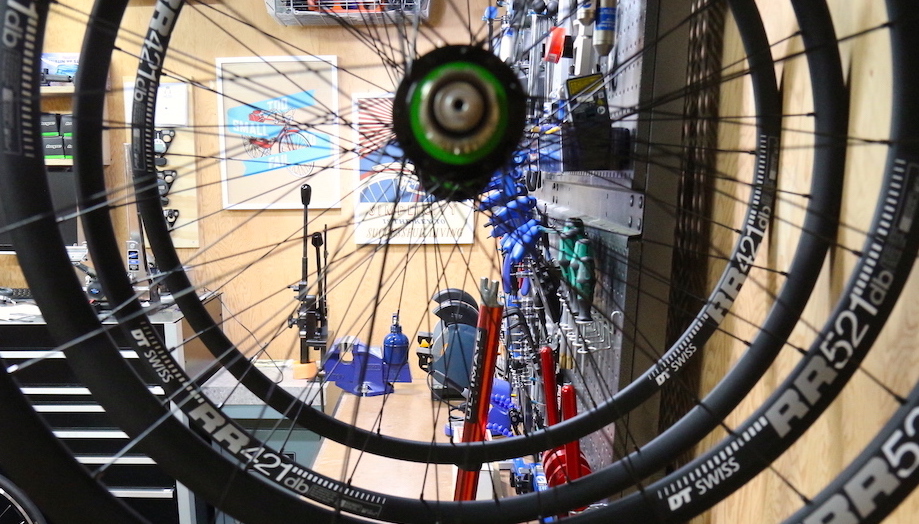
What follows is a retrospective on the first anniversary transistor truing. How we got here, how it’s going and next steps.
For the last several years I built bicycle wheels commercially. It was a fun business. I liked my customers and enjoyed the technical aspects. My shop became known in the wheelbuilding community thanks to tension visualization software I’ve shared since 2013. It’s getting long in the tooth but is still widely used. One manufacturer used it over 1700 times this year.
I wasn’t a master wheelbuilder in the beginning and still wasn’t when I became DT Swiss-certified. But with the accumulation of experience my learning slowed and I started asking how I’d work if not for the limitations of my tools. I had sketchbooks of ideas but no time to explore them. Ironically the catalyst was a 2018 bike crash and a broken hip that gave me close to a year of downtime. Visualization was on my mind already by then.
When I returned to the bench I had new tools, relatively crude but promising from the start. Benefiting professionally was incentive enough to continue development. For example there was no foot pedal in the first version and now it’s hard to imagine wheelbuilding without one. Wheel Analytics, still nameless at that point, became a valued tool.
Setting aside speed and accuracy gains, job satisfaction was the biggest marker of success. Wheelbuilding naturally lends itself to a state of mental flow and visualization takes it to another level. The visual form is a hotline to primitive parts of the brain — concepts are materialized in the mind with reduced cognitive effort. This fosters a sense of ease and time flies. Visualization makes working with indicators a pleasure, even from the start of a build or on gnarly repairs.
Wheel Analytics wasn’t built in secret and generated interest early on. Still it took a while to decide whether to bring it to market. A toolmaker’s tool is not a product. A product needs approachable user interfaces, thorough testing, documentation, and supply chain support.
Those gaps filled, Islandix launched one year ago. So far I’m calling it a provisional success. Sales is the key performance indicator and Islandix reached its 2021 sales goal by early November. The other vital metric is customer happiness and that’s equally successful. Support has not been difficult but lessons have been taken — today’s software and documentation are mature compared to a year ago.
With this for a start the plan for 2022 is to focus on sales. Doubling sales is needed to put the company on a permanent footing and I think it’s achievable. If it happens, I can justify doing it all over again — there are sketches of truing stands, tensiometers and new visualizations waiting to be explored.
Ryan
Published December 24, 2021